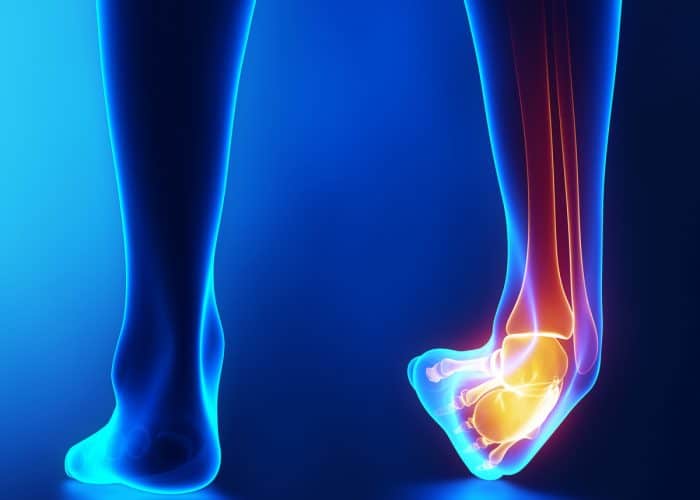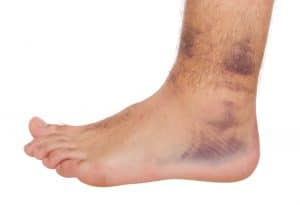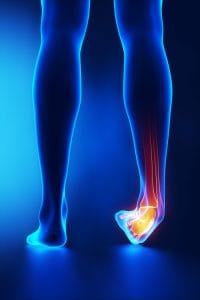
You’re running along feeling really good, then the ground suddenly produces an uneven pothole and suddenly BAM, that was your ankle that gave way, you know that horrible feeling when you’ve wrenched your ankle ligaments.
This scenario was totally me when I was playing football. The first one I twisted my ankle while off balance and then fell back and sat straight on the foot when the lateral ligaments were already stretched (ligaments on the outside of the ankle).
I didn’t get my ankle treated by anyone (my pre-Osteopath days), just rested it for a couple of weeks. On the third week Iwent back to footy, and yep, rolled it again! How common is the…too common.

This time all it took was just turning when I grabbed the ball and the ankle gave way (I can assure you, I was having a blinder playing off half back!). It was much more disappointing than the original injury. Does this sound familiar??
I took a few more precautions this time strapping & taping before getting back out on the park.
Rehabilitation is important to strengthen the ankle AND to regain ankle stability. The body’s positional feedback mechanism of where a joint is in space known as “proprioception”. Working on proprioception is essential for your awareness and confidence in your ankle. It means we are less likely to be in a position to sprain the ankle again (I have provided some proprioception rehab exercises in my video link below).
It’s well-known that Ankle sprains are one of the most common sporting injuries around the country, most of you and probably most of your mates would have done an ankle at some stage. Sports that require constant jumping, turning and twisting such as basketball, volleyball, netball and football. Also sports with explosive changes of direction such as soccer, tennis and hockey, ensure there are plenty of ankle sprain casualties.

It’s estimated that 80% of ankle sprains are on the outside (lateral side), compared to the big toe side of the ankle (medial).
What happens during a lateral ankle sprain is the foot points down and the bottom of the foot then twists inwards (over plantar flexes and inverts), this causes the ligaments on the outside of the ankle to stretch beyond their natural ranges.
Most sprains are caused from some kind of trauma to stretch the ligaments. But when I was training for the 2016 Melbourne Marathon, my ankle felt like I had sprained it again, even though I had no big twists or falls.
I had suffered a few very minor twinges when running on uneven footpath but this was nothing that caused enough damage to hurt or make me stop. After a week or so of this, the next casualty was my knee knee started to hurt when I was running as well. This time I knew a lot more about Osteopathy and the links one joint has to the rest of the body.

The foot itself is made up of 26 bones and 33 joints, then we add in the lower leg bones (tibia and fibula) which make up parts of the ankle joint.
When the outside of the ankle is wrenched in an ankle sprain, some of those 26 bones on the inside of the foot get jammed together as a consequence. This can cause a fair whack of pain on that inner side, which is a fairly common scenario. You may even notice bruising here.
So what does all this mean? It means it’s not just the ligaments that are affected when you roll your ankle. If the joints are not moving from being jammed up, it won’t allow the traumatised ligaments to have its best chance of healing; biomechanically it places more pressure on other joints.
In my case with excessive running, my ligaments had recovered fine, but the joints were not moving as well as they should be. Clearly this created an increasing load on my knee explaining why I was feeling pain there too.
So do Osteopaths deal with ankle sprains?? Yes!!
Not only will an Osteopath check your ankle, we will look at your knees and hips to make sure they functioning the best way possible to give the ankle every chance of working the way it should. I always prescribe exercises for stability and mobility which I have found aides in getting the whole body connecting to the ankle again. This is the best was to try and prevent recurring issues.
If you want help with this type of problem I would be glad to help you out. Watch the following Vid for some simple rehab exercises you can implement today! Just click our link – you wont leave the website!
We are here to help. Book Online or call our staff on 9859 5059
If you are one of those people who have had a bucket-load of ankle sprains there is probably something that needs to be investigated further. You may be a good candidate for an Anatomy-In-Motion consult to delve a bit deeper into some whole body dysfunctions and the relationship your ankle has with the rest of your body.
References:
-Hubbard, T. and Cordova, M. (2009). Mechanical Instability After an Acute Lateral Ankle Sprain. Archives of Physical Medicine and Rehabilitation, 90(7), pp.1142-1146.
-Carl G. Mattacola; Maureen K.Dwyer .(2002). Rehabilitation of the ankle after acute ankle sprain or Chronic instability. Journal of Athletic Training, 37(4), pp.413-429.